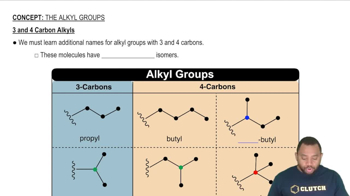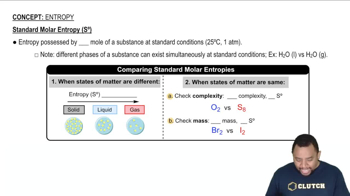Here are the essential concepts you must grasp in order to answer the question correctly.
Entropy (S°)
Entropy is a measure of the disorder or randomness in a system. It quantifies the number of possible microstates that correspond to a given macrostate. In thermodynamics, higher entropy values indicate greater disorder and more available energy states, which is crucial for understanding the stability and reactivity of substances.
Recommended video:
Entropy in Thermodynamics
Allotropes of Carbon
Allotropes are different structural forms of the same element, in this case, carbon. Graphite, diamond, and buckminsterfullerene (C60) are distinct allotropes with unique arrangements of carbon atoms, leading to different physical and chemical properties, including variations in entropy due to differences in molecular structure and bonding.
Recommended video:
Comparative Entropy of Allotropes
When comparing the entropies of different allotropes, one must consider their molecular complexity and structural arrangements. Graphite, with its layered structure, typically has higher entropy than diamond, which has a rigid three-dimensional lattice. Buckminsterfullerene, being a spherical molecule with a unique structure, is expected to have an entropy value that reflects its complexity, likely falling between those of graphite and diamond.
Recommended video:




